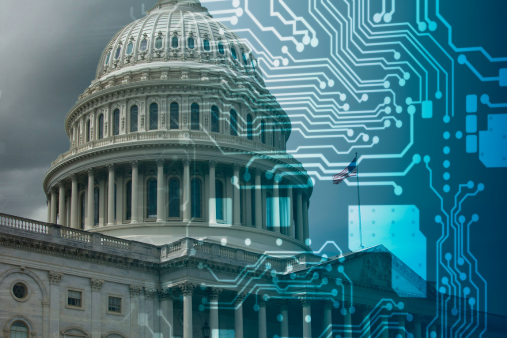The 2017 Tax Cuts and Jobs Act (the Act) significantly affects business aviation. The full impact of changes to bonus depreciation, Federal Excise Tax exemptions, entertainment deductions, and the repeal of 1031 exchanges for personal property are unknown. However, based upon the language of the Act and current law, the impact on tax planning is immediate. We anticipate either a Technical Correction Act and/or additional guidance to be issued by the IRS containing certain issues as noted below.
1. Temporary 100% Expensing For Certain Business Assets
The Act allows for 100% deduction for business expenses (such as the purchase of an aircraft) placed into service after September 27, 2017, on the condition that the taxpayer has not entered into a written binding contract for the acquisition of an aircraft prior to September 27, 2017. See the Act, §13201(h). Note: The taxpayer may elect out of 100% expensing and depreciate an aircraft in accordance with other available depreciation methods.
The former law allowed for a 50% first year bonus depreciation (although the Act technically uses the term “increased expensing,” for the purposes of this alert we will use the common phrase of bonus depreciation) for the purchase of new aircraft, on the condition that an aircraft is used for a qualified business use. The Act allows for temporary 100% bonus depreciation for aircraft acquired and placed into service after September 27, 2017, and before January 1, 2023. (§13201(a)(2)), so long as the taxpayer had not either entered into a binding contract for the acquisition of an aircraft such or used an aircraft at any time prior to September 28, 2017. Further, the Act extends bonus depreciation to the purchase of used aircraft. The Act includes a transition rule that allows the taxpayer to elect a 50% allowance instead of a 100% allowance. (§13201).
In order to qualify for the bonus depreciation under the Act, a taxpayer must still comply with the requirements of §168(k) of the Internal Revenue Code. Specifically, you must be able to show that an aircraft meets the primary business use test during the year you intend to take the 100% bonus depreciation. To summarize broadly, for purposes of meeting the primary business use test, you must show that at least 25% of the time flown was for ordinary and necessary business use. If there is any personal non-entertainment or personal entertainment use of an aircraft, you must impute income to an employee. As long as you impute that income (and 25% of the flight time qualifies as ordinary and business), under the tax code you will qualify as having 100% business use for the purpose of bonus depreciation.
The Act provides that property are not treated as acquired after September 27, 2017, if a written binding contract for its acquisition was entered into before September 28, 2017. (§13201(h)(1)).
In short, a contract is binding (for purposes of the rules providing time limits for the acquisition of qualified property) only if:
- The contract is enforceable under state law against the taxpayer or a predecessor; and
- The contract does not limit damages to a specified amount (for example, by use of a liquidated damages provision).
(Reg. 1.168(k)-1(b)(4)(ii)(A))
A contract that limits damages to an amount equal to or less than 5% of the total contract price is not treated as limiting damages to a specified amount. In determining whether a contract limits damages, the fact that there may be little or no damages because the contract price does not significantly differ from fair market value isn't taken into account. A contract that provides for a full refund of the purchase price in lieu of any damages allowable by law in the event of breach or cancellation is not considered binding. There is still an open question on whether a contract can be “binding” for one party and not for the other.
In order for property to constitute “qualified property” eligible for bonus depreciation the property must qualify for the general depreciation rules of the Modified Accelerated Cost Recovery System (MACRS) under Section 168 of the Tax Code. Property that is subject to the “alternative depreciation system” (ADS) described in Section 168(g) is not “qualified property” eligible for depreciation under MACRS.
Section 280F(b) of the code provides that certain “listed property” will be treated as ADS property under Section 168(g) if certain requirements are not met. Aircraft are listed property. Under Section 280F(b)(2), if an aircraft is not predominantly used for qualified business use (i.e., used more than 50% in the trade or business of the taxpayer) for any taxable year (the “Predominant Use Test”), then MACRS is not available, and instead an aircraft must be depreciated under the slower straight line method of the alternative depreciation system, and any first-year “bonus” depreciation in excess of depreciation under ADS must be “recaptured” as ordinary income in the tax year that the Predominant Use Test is not met.
Section 168(k)(2)(C)(i)(II) provides that Section 280F(b) must be applied before determining whether an aircraft is eligible for bonus depreciation. Thus, the Predominant Use Test must be satisfied in the first year in order to take bonus depreciation.
Section 168(k)(2)(F)(ii) also makes clear that that the limitations of Section 280F(b)(2) apply to bonus depreciation: “The deduction allowable under paragraph (1) [i.e. the bonus depreciation deduction] shall be taken into account in computing any recapture amount under section 280F(b)(2).” Thus, the Predominant Use Test must be satisfied in each subsequent tax year during the ADS recovery period for an aircraft in order to avoid recapture of the bonus depreciation.
The listed property recapture rules under Section 280F(b) only apply if the Predominant Use Test is failed during the ADS recovery period that applies to the asset, and such rules apply only to recapture the excess of the depreciation taken under MACRS/bonus over what would have been taken under ADS. There is no excess depreciation expense to recapture under the listed property rules if the applicable ADS recovery period has expired.
The next question is what constitutes “qualified business use” necessary to satisfy the Predominant Use Test. The term “qualified business use” generally means any use in the trade or business of the taxpayer other than use for the production of income under Section 212.
There are important exceptions. Generally, the following uses of listed property by 5% owners and related persons are not qualified business use:
- The use of listed property that is leased to a 5% owner or related person;
- The use of listed property was provided as compensation for the performance of services by a 5% owner or related person; or
- The use of listed property is provided as compensation for the performance of services by any person not described in (b), above, unless an amount is reported as income to such person and taxes are withheld
See Section 280F(d)(6)(C)(i); and Treas. Reg. § 1.280F-6(d)(2)(ii)(A).
But, if the property involved is an airplane, the above-mentioned business use by 5% owners and related persons is qualified business use if at least 25% of the total use during the tax year consists of other types of qualified business use. Section 280F(d)(6)(C)(ii); and Treas. Reg. § 1.280F-6(d)(2)(ii)(B). The most conservative approach is to qualify for the 25% business use test by flight hours, based upon per-passenger flight hours.
Thus, if the 25% threshold is satisfied in a given year, trade or business use otherwise excluded is counted in determining whether more than 50% of total use of an aircraft for that year is qualified business use.
If the Predominant Use Test is not satisfied, an aircraft may still be depreciated to the extent of the qualified business use, but that portion of the basis of an aircraft that may be depreciated must be depreciated using the straight-line ADS system. Business use aircraft depreciable under ADS system must be depreciated on a straight-line basis over a six-year recovery period (12 years for commercial/charter aircraft).
The taxpayer must meet the Predominant Use Test during each taxable year of the applicable ADS recovery period. Maintenance flights must be allocated between flight hours or miles that are for qualified business use and flight hours or miles that are not for qualified business use, taking into account the preceding exclusions for 5% owners and related persons. For example, if 40% of the flight hours (or miles) of an aircraft (other than maintenance flights) are qualified business use, then only 40% of maintenance flight hours (or miles) may be taken into account as qualified business use. See Technical Advice Memorandum 200945037 (July 29, 2009).
As with any new legislation, several open questions must be addressed through either technical corrections or advisory opinions. For bonus depreciation, it is unclear what the term “such property was not used by the taxpayer at any time prior to such acquisition” means. Specifically, it is unclear whether charter or demonstration flights are considered as “used by taxpayer.” Further, the Act is silent on whether straight-line election for entertainment disallowance purposes is being revisited with enactment of 100% bonus depreciation.
2. Federal Excise Tax Exemption
The IRS had instituted a number of audits of aircraft management companies seeking to impose federal excise tax (FET) on amounts paid by a company to a management company for management services (including pilot services) relating to the operation of an aircraft. The new tax law seeks to address the audit concerns for managed aircraft in a positive way.
The Act creates an exemption to FET related to aircraft management services. Specifically, payments for the following are exempt from FET:
- Support activities related to an aircraft (e.g. storage, maintenance, fueling);
- Activities related to the operation of an aircraft (e.g. hiring and training of pilots, hiring and training of crew);
- Administrative services related to an aircraft (e.g. scheduling, flight planning, weather forecasting, insurance, establishing and complying with safety standards); and
- Other services necessary to support flights operated by an aircraft owner.
These exemptions, however, are applicable only to the extent that they are directly attributable to flights on an aircraft owner’s own aircraft. For example, if an aircraft owner leases its aircraft to a charter company and is provided an aircraft (not the owner’s aircraft) as needed, such payments could still be subject to FET.
For the purposes of determining whether a lessee is an aircraft owner for the purpose of the FET exemption, a lessee is not considered an aircraft owner if (i) the lease is for a term of 31 days or less and (ii) an aircraft is leased from a management company or a related party. Otherwise, the lessee is considered an aircraft owner for FET purposes.
3. Disallowance of Travel Expenses “Directly Related” to Business
Under the former law, entertainment, amusement, and recreation were deductible if and only if the entertainment, amusement, or recreation bore direct relation to the active conduct of the taxpayer’s business. This deduction applied to the use of aircraft to get to the entertainment as well. 26 US Code § 247(a)(1).
For tax years starting with 2018, all entertainment, amusement, or recreation expenditures, regardless of whether they are directly related to a business goal will not be allowed. This would likely include travel on the company aircraft with business customers, prospective clients before, during or after entertainment, even if the entertainment was clearly associated with a business goal.
4. Disallowance of Commuting Expenses
The Act disallows deduction of costs for reimbursing transportation to employees to commute between employee’s residence and place of employment, unless provided for the safety of the employee. The Act is unclear as to whether an amount included in employee’s income for commuting (i.e. Standard Industry Fare Level (SIFL)) is deductible to the company for commuting flights. Further, it is unclear whether partners, LLC members, and S corporation owner-employees are treated as employees for the purpose of the Act’s Entertainment and commuting rule changes. A planning option might be to document that the commuting on the company aircraft by an executive is for security reasons related to the safety of the employee. This could involve obtaining an independent security survey that could also reduce the amount of SIFL to be imputed to the employee/executive.
5. Repeal of 1031 Exchanges For Personal Property
1031 like-kind exchanges of aircraft are no longer permitted under the new federal tax laws. (§13303). Thus, the only like-kind exchanges remaining in the Tax code are exchanges of real property not held primarily for sale.
If a 1031 exchange (or a reverse like-kind exchange) was initiated before December 31, 2017, then the amendments contained in the Act do not apply, and the like-kind exchange can be completed. (§§13304(c)(2)(A) and (B)).
The benefits of a like-kind exchange, at least until the end of 100% expensing (2023 or 2024 for longer production period property and certain aircraft), are offset by the ability to expense 100% of the purchase price of the replacement aircraft, which should more than offset the gain on the sale of the relinquished aircraft. Planning concerns may exist where the sale of the relinquished aircraft occurs in a tax year different than the purchase of the replacement aircraft.
To obtain more information regarding this alert, please contact Aviation Practice Group chair Clifford G. Maine at 616-742-3944 or clifford.maine@btlaw.com or vice-chair Todd A. Dixon at 616-742-3959 or todd.dixon@btlaw.com.
© 2018 Barnes & Thornburg LLP. All Rights Reserved. This page, and all information on it, is proprietary and the property of Barnes & Thornburg LLP. It may not be reproduced, in any form, without the express written consent of Barnes & Thornburg LLP.
This Barnes & Thornburg LLP publication should not be construed as legal advice or legal opinion on any specific facts or circumstances. The contents are intended for general informational purposes only, and you are urged to consult your own lawyer on any specific legal questions you may have concerning your situation.
Visit us online at www.btlaw.com and follow us on Twitter @BTLawNews.












/Passle/6488d4630e7e25c9ac9f834a/SearchServiceImages/2024-11-14-13-11-27-495-6735f6fff42d6cc59c8ec5c1.jpg)
/Passle/6488d4630e7e25c9ac9f834a/SearchServiceImages/2024-11-11-22-02-38-042-67327efe31216b909e6ea644.jpg)
